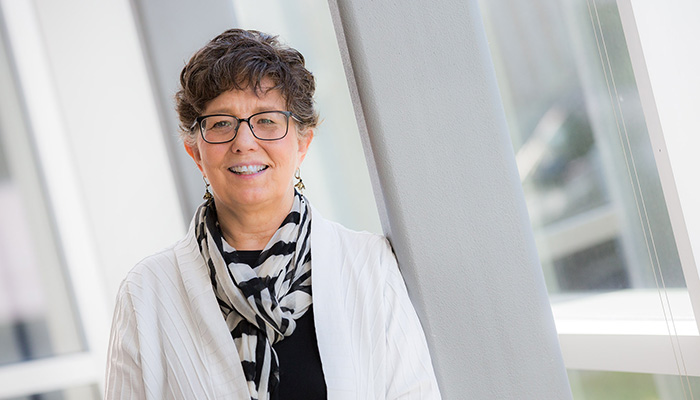It takes a village to keep people healthy, national expert explains

Behold a model health care team of the future tasked with caring for an older patient just home from the hospital with a new joint replacement and serious problems getting around.
- Nurse: Visits the patient at home to monitor vital signs and dress the wound.
- Occupational therapist: Trains patient to safely bathe, dress and prepare meals.
- Pharmacist: Spots medications likely to cause a fall due to side-effect dizziness.
- Lawyer: Persuades landlord to comply with regulations requiring a ramp to the entrance.
- Handyman: Installs the ramp, plus bathroom grab bars.
Subtract any member of the interprofessional team and the patient’s risk of going back to the hospital skyrockets.
That’s the message a top national health-care visionary brought to clinicians, faculty and students at UNT Health Science Center last week.
Barbara Brandt, PhD, is Director of the National Center for Interprofessional Practice and Education housed at the University of Minnesota. NCIPE is designated by the U.S. Department of Health and Human Services as the sole center to further interprofessional education and practice.
Dr. Brandt’s job includes studying progress and best practices all over the nation in educating health care professionals to work in teams – both the newly minted and the old hands. At UNTHSC, she shared her expertise and praised the University’s two-year-old Interprofessional Education and Practice initiative.
“I’m blown away by what’s going on here,” she said. “Your state legislature has tasked your state institutions’ presidents with making IPE happen all across Texas, which is not something I’ve heard of in any other state.”
Dr. Michael Williams, President of UNTHSC, has placed interprofessional education and practice as an institutional priority in health care education, research and practice.
It’s a tall order, educating professionals from myriad fields to understand each other’s terminology and set aside professional rivalries.
But it can and will be done, and UNTHSC is helping lead the way.
The drivers of this paradigm shift, Dr. Brandt emphasized, include a national mandate to pay practitioners according to outcomes – how well the patient fares – rather than the number or complexity of procedures. This change, Dr. Brandt said, is being implemented for Medicare by U.S. HHS Secretary Sylvia Burwell.
“We have to address the problem of ‘frequent fliers’ to emergency rooms,” said Dr. Brandt, while reducing costs and improving quality.
This summer, UNTHSC Interprofessional Education Director David Farmer, PhD, met with his counterparts across Texas to review IPE/P progress and innovations across state institutions.
“Our success in partnering with various organizations including Texas Christian University is an exemplary model of Interprofessional education and practice innovations and initiatives,” Dr. Farmer said.
Dr. Brandt’s visit was funded by the Donald W. Reynolds Foundation Grant as part of geriatric education initiatives that began within the Texas College of Osteopathic Medicine and now involve health professions students throughout UNTHSC and Texas Christian University.






Social media